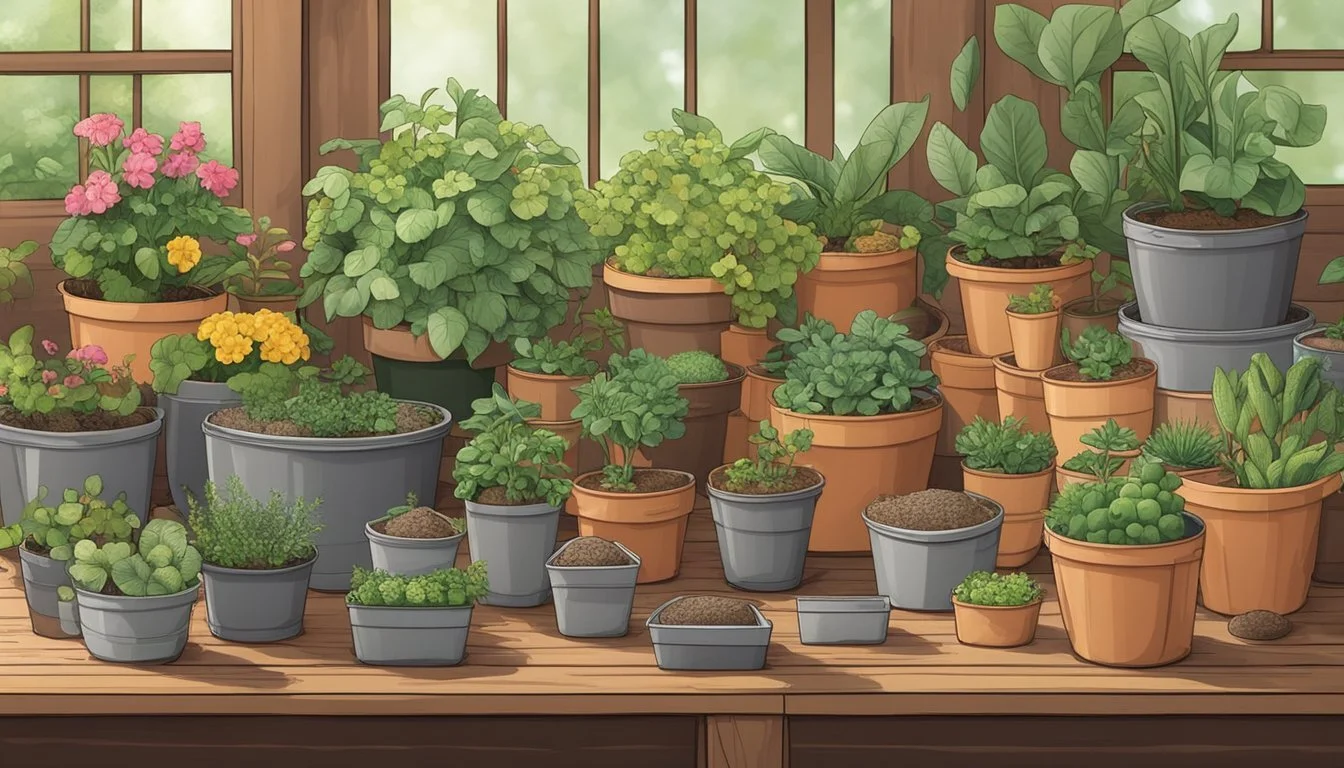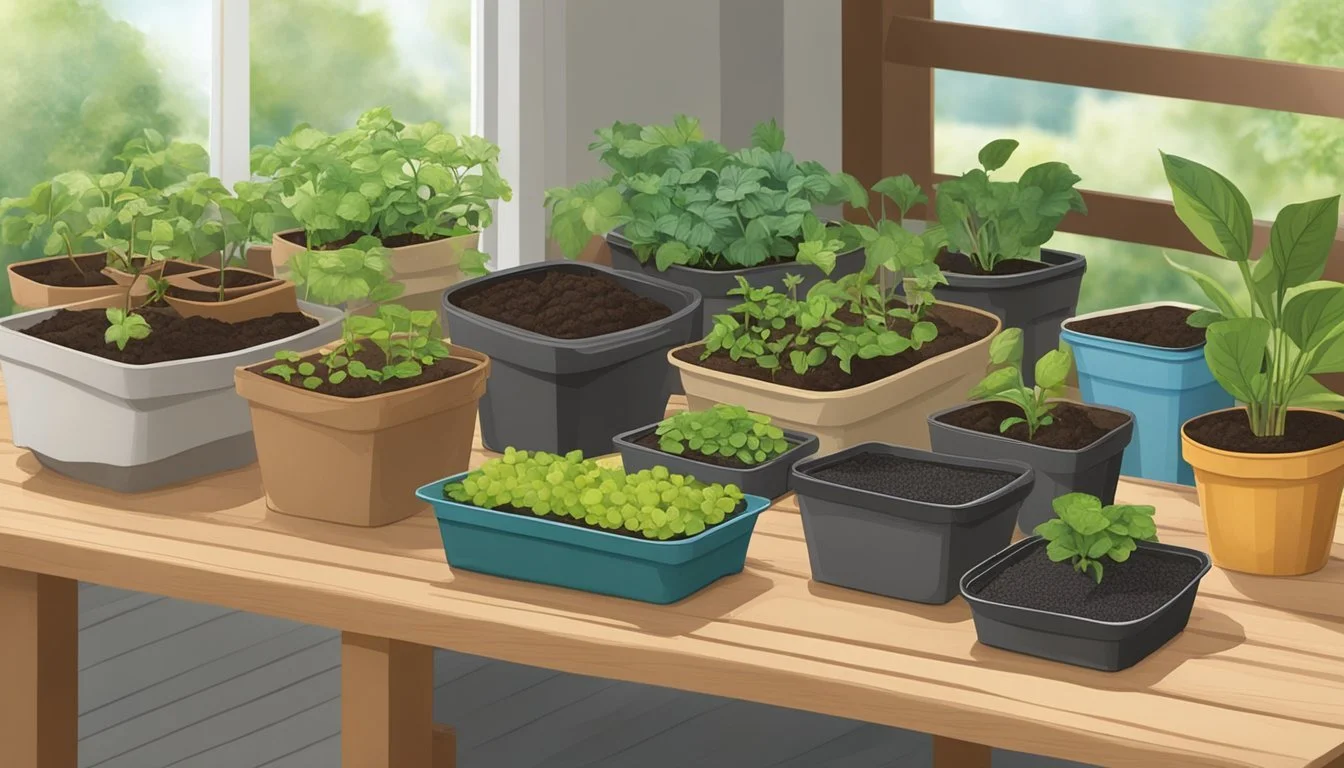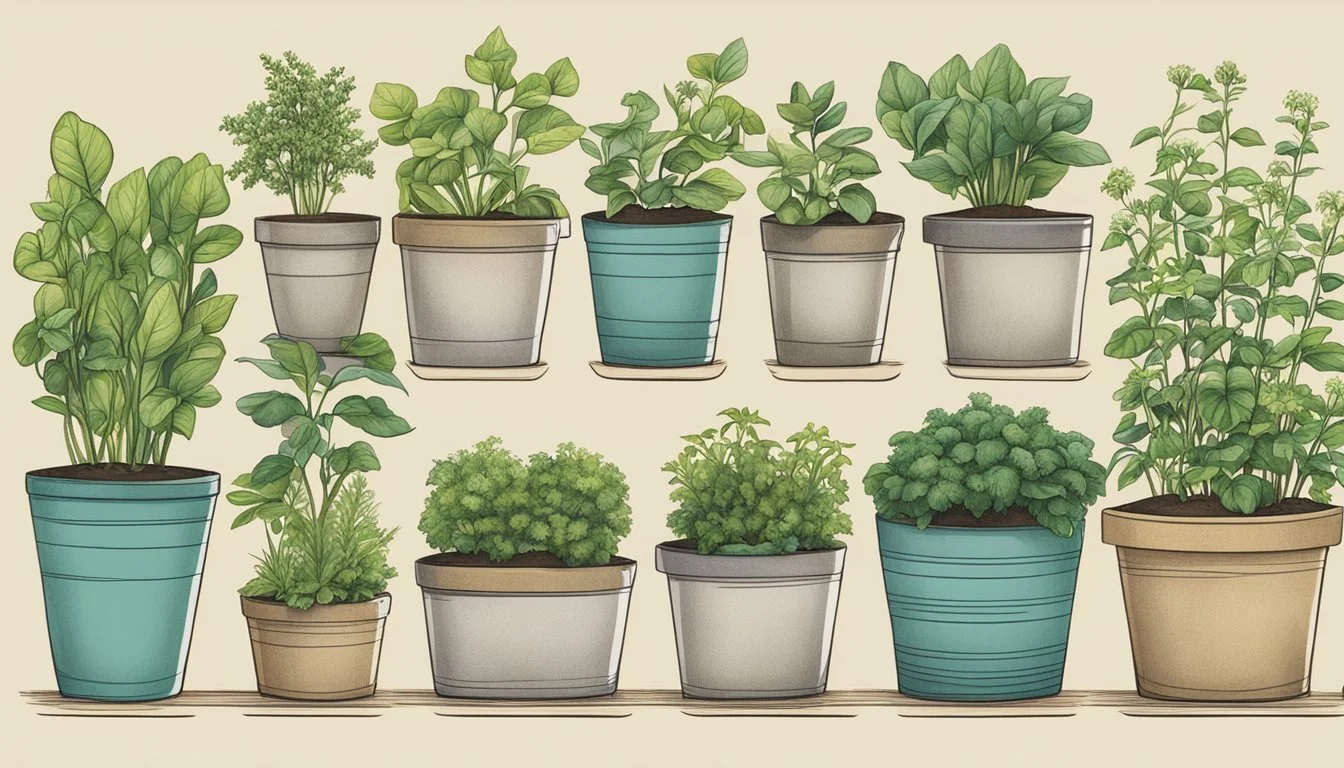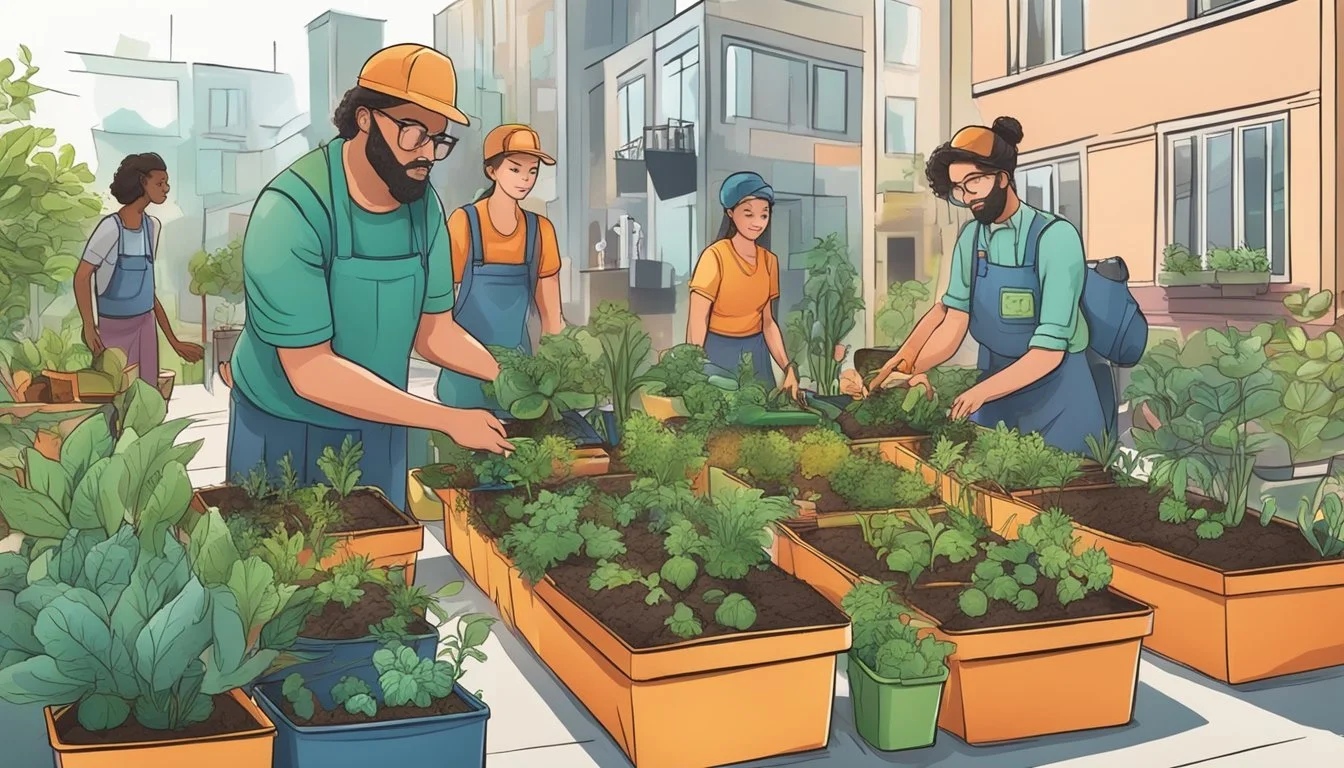The Ultimate Guide to Reusable Planting Containers
Eco-Friendly Tips for Homesteaders
Sustainable gardening begins with choices that reduce waste and promote environmental health, such as selecting reusable planting containers for starting plants in a homestead setting. These containers offer a durable alternative to single-use plastics and demonstrate a commitment to ecological stewardship. They come in a variety of materials including wood, terracotta, and recycled plastics, each with its own lifespan and environmental impact. By choosing reusable containers, gardeners can significantly cut down on plastic waste and resource consumption.
To make the most of reusable planting containers, understanding their proper use and maintenance is crucial. These containers must have adequate drainage and be of a size appropriate for the plants being grown. Materials like terracotta are porous, offering good air flow to roots but may require more frequent watering, whereas plastic containers retain moisture longer and are lighter for easy handling. Regular cleaning and storage practices can extend their usability, ensuring a cycle of sustainable growing season after season.
It’s important to note that the process of sustainable plant starting doesn't stop at the container selection. Complementing these containers with a well-managed compost system, rainwater harvesting, and soil conservation practices such as cover cropping can enhance the sustainability of a homestead garden. By integrating these methods, gardeners can create a more resilient and self-sufficient ecosystem that thrives with minimal external inputs, embodying the true spirit of homesteading.
Why Choose Reusable Planting Containers
When starting a homestead garden, one's choices contribute significantly to sustainability and efficiency. Reusable planting containers come as a strong recommendation for gardeners who prioritize environmental health, economic savings, and resource versatility.
Environmental Benefits
Reusable planting containers significantly reduce the carbon footprint associated with single-use plastics. By opting for eco-friendly options such as biodegradable pots or those made from sustainable materials like recycled plastic, homesteaders contribute to a reduction in landfill waste. These containers often have longer life cycles and can be composted at the end of their usability, further lessening environmental impact.
Cost-Effectiveness and Durability
Investing in reusable containers can be more cost-effective in the long run. They are designed to be robust, outlasting many single-use alternatives. This durability means fewer replacements and less waste produced, translating to long-term savings. Materials like heavy-duty plastic, terracotta, or even repurposed items are renewable choices that ensure sustained use without frequent expenditure.
Versatility and Adaptability
Reusable containers offer great versatility as they can be adapted for various plants and landscapes. They can be easily moved to suit changing light conditions, accommodate growth, or respond to fluctuating weather, providing ideal conditions for plants to thrive. Furthermore, containers come in various sizes and shapes, allowing homesteaders to tailor their garden setup to the available space, whether they're planting herbs, vegetables, or ornamental plants.
Selecting Suitable Containers
In sustainable plant starting within the realm of homesteading, choosing the right containers is crucial. Not only do they impact the health of the plants, but they also play a significant role in environmental conservation and efficiency.
Identifying Appropriate Materials
When it comes to materials, the choice is broad, but not all are equal in terms of sustainability and plant health. Terracotta, ceramic, and clay pots are favored for their porosity, which allows soil to breathe and excess water to evaporate—this aids in preventing root rot. On the other hand, plastic pots are lightweight and cost-effective, making them a practical choice. They come in recyclable varieties that align with sustainable practices. However, gardeners should ensure that any plastic used is safe and free from harmful chemicals.
Materials Overview:
Terracotta/Ceramic/Clay Pots:
Pros: Porous, allows airflow, prevents waterlogging
Cons: Heavy, fragile, can be more expensive
Plastic Pots:
Pros: Lightweight, inexpensive, versatile
Cons: Less breathable, can deteriorate in sunlight
Size Matters: Matching Containers to Plant Needs
Container size is a crucial consideration, as it must correspond to the root size and growth rate of the plants. Containers should provide ample space for root development, but not so much that the soil remains wet and cold, which can hinder growth. Conversely, a pot too small can restrict root growth and dry out too quickly. Each plant's specific needs must guide the container size selection.
Size Recommendations:
Small plants/herbs: 6–8 inches in diameter
Medium plants: 8–12 inches in diameter
Large plants/vegetables: 12+ inches in diameter
All containers must have adequate drainage to ensure water does not collect at the base, as this can lead to root diseases.
Considering the Location and Climate
The choice of container material can also be influenced by climate and location. Terracotta, ceramic, and clay pots are well-suited for hot and dry climates as they allow soil to cool due to their breathability. In contrast, these materials may not be ideal in cold climates as they can crack when temperatures drop. Plastic pots are more resistant to temperature fluctuations and are lighter, which is beneficial if containers need to be moved to optimize light exposure or to protect from adverse weather.
Climate Suitability:
Hot/Dry Climates:
Terracotta, Ceramic, Clay preferred
Cold/Variable Climates:
Plastic recommended for its durability and insulation properties
Designing Your Container Garden
Designing a container garden involves careful consideration of space aesthetics, plant selection, and efficient use of limited areas. One's approach to arranging containers can transform a simple collection of pots into a cohesive and attractive feature of the home whether it's on a patio, balcony, or indoors.
Aesthetic Considerations for Layout and Arrangement
A well-designed container garden should harmonize with the surrounding environment. Visual balance and color coordination are essential; for example, selecting containers in colors that complement the home's exterior can create a seamless aesthetic. Arrangement of plants should take both height and spread into account, with taller plants like small trees or shrubs providing a backdrop for shorter annuals and perennials. Incorporating varying levels by using stands or hanging window boxes can add depth and interest to small spaces.
Choosing the Right Plants for Your Container
Selection of plants should align with:
Light requirements: Sun-loving vegetables and some flowering plants necessitate direct light, while others thrive in shade.
Growth habits: Dwarf varieties and creeping plants can save space and create stunning visuals.
Seasonal interest: Combining evergreens with seasonal flowers or vegetables ensures year-round appeal.
List of Suitable Plants by Type:
Flowers: Impatiens (shade), Petunias (sun)
Vegetables: Tomatoes, Peppers (5-gallon containers)
Herbs: Green onion, parsley (6-10 inch pots)
Native Plants: Seek native species suited to local climate conditions
Maximizing Space in Small Areas
When working with confined spaces, each choice must be strategic:
Vertical Gardening: Utilize trellises and wall planters to grow upwards.
Interplanting: Combine slow-growing plants with faster-growing species.
Dual-purpose Features: Some containers can serve both aesthetic and practical functions, like a bench planter.
Table of Space-Saving Strategies:
Strategy: Multi-level Planting
Implementation: Stagger plant heights using stands/racks
Strategy: Hanging Planters
Implementation: Suspend window boxes or hanging pots
Strategy: Compact Varieties
Implementation: Opt for plants bred for small spaces
Strategy: Edible Landscaping
Implementation: Incorporate vegetables/herbs into displays
By adhering to these principles, one can design a sustainable and visually appealing container garden, even within the confines of a small homestead.
Soil and Nutrients for Plant Health
Proper soil preparation and nutrient management are critical for the health and productivity of plants in reusable planting containers. These aspects provide the foundation for strong, resilient plant growth in homesteading activities.
Choosing and Mixing the Right Potting Mix
Selecting the right potting mix for reusable containers is crucial for plant health. A balanced potting mix typically includes peat moss, which retains moisture and air; vermiculite, for improved aeration and moisture retention; and compost, to provide essential nutrients. For sustainable plant starting, one could consider using a mix of:
Two parts peat moss or coconut coir
One part vermiculite or perlite
One part compost or well-aged manure
This blend will ensure water retention, good drainage, and a steady supply of nutrients.
Understanding the Role of Compost and Organic Matter
Compost and organic matter are the cornerstones of a healthy soil ecosystem, as they offer a wide range of nutrients and improve soil structure. Adding compost to the potting mix introduces essential microorganisms that aid in the breakdown of organic materials, thereby:
Enhancing nutrient availability: Compost provides diverse and balanced plant nutrients.
Improving soil structure: Organic matter helps in retaining moisture while providing good drainage.
Compost can be mixed directly into the potting mix or used as a top dressing to nourish the plants during the growing season.
Fertilization: Types and Application
Fertilizers supplement the soil with essential nutrients, which might not be sufficiently available in the potting mix alone. Plants need both macronutrients — such as nitrogen, phosphorus, and potassium — and micronutrients — like iron, manganese, and zinc — for their growth. While organic fertilizers release nutrients slowly and improve soil structure, synthetic fertilizers provide nutrients quickly. A sustainable fertilization strategy could involve:
Starting with a soil test to determine existing nutrient levels.
Applying organic fertilizers, such as fish emulsion or bone meal, for a slow-release of nutrients.
Using synthetic fertilizers sparingly, as per the test recommendations and the specific needs of the plants.
For best results, always follow the manufacturer's instructions on the frequency and quantity of fertilizer application to prevent nutrient burn and environmental damage.
Watering and Drainage Techniques
Proper watering and drainage are crucial for the health of plants started in reusable containers. They ensure a balance between adequate moisture and aeration, preventing problems such as root rot and promoting optimal plant growth.
Balancing Moisture Levels for Optimal Growth
To maintain the right moisture levels, one must monitor the soil's moisture regularly. A balance is essential: too much water leads to a lack of oxygen for roots, while too little can cause plants to dry out. Mulch can be used on the soil's surface to reduce evaporation and maintain consistent moisture levels. Watering should be done deeply enough to encourage the roots to grow downwards, which promotes a strong foundation for the plant.
Creating Effective Drainage Systems
Effective drainage systems in reusable planting containers are non-negotiable for plant health. Drainage holes at the bottom of containers ensure excess water can leave the soil, preventing waterlogging that leads to root rot. To enhance drainage, one can layer gravel or small stones at the base of the container before adding soil. This layer acts as a filter, preventing soil from clogging the holes while allowing water to drain through.
Irrigation Options: From Drip Systems to Sprinklers
When considering irrigation for containers, gardeners have multiple options:
Drip Irrigation System: It delivers water directly to the soil at the base of the plant. This targeted approach conserves water and reduces the chances of leaf diseases caused by overhead watering.
Sprinklers: They are beneficial for watering wide areas but should be used with care to prevent excess water on leaves and evaporation.
Use timers and moisture sensors to ensure that plants are watered adequately without overwatering, directly impacting the sustainability of the gardening practice.
By mastering these watering and drainage techniques, gardeners can help their plants thrive in a sustainable way.
Container Maintenance and Care
In maintaining a sustainable homesteading garden, attention to the care of reusable planting containers is paramount. Not only does this practice support plant health and productivity, but it also mitigates the risks of disease and pest infestation, ensuring a thriving garden year-round.
Regular Monitoring and Adjusting for Healthier Plants
A gardener should check containers regularly to assess plant well-being. Root growth is an essential indicator to determine if plants require larger containers. Adequate room allows roots to expand, reducing stress and promoting vigor. Additionally, observing moisture levels is critical. Over-watering can cause root rot, while under-watering might dehydrate plants. One must ensure a balance by adjusting watering schedules according to plant needs and weather conditions. Mulching can help maintain soil moisture. A thin layer of organic mulch, such as straw or wood chips, may be applied to conserve water and regulate soil temperature.
Monitoring Checklist:
Root inspection for potential re-potting
Soil moisture assessment
Mulch application check
Preventing Diseases and Pests
To guard against diseases and pests, cleanliness is crucial. Containers should have drainage holes to prevent waterlogging. When composting, ensure that only fully decomposed material touches the plants to avoid introducing pathogens. Regular removal of plant debris and dead foliage diminishes the risk of disease and pest harborage. Using natural fertilizers like compost or worm castings not only nourishes plants but also improves soil structure and reduces the chance of disease.
Prevention Strategies:
Adequate drainage in containers
Use of matured compost
Clean-up of plant residues
Seasonal Considerations and Container Storage
As the seasons change, so do the care requirements for planting containers. Prior to harvesting, ensure that fertilization is tailored to the growth stage of the plant. During dormant periods, some containers can be left outside if materials are frost-resistant, while others should be cleaned and stored indoors to prevent cracking. Low-maintenance garden techniques such as choosing the right container material can decrease the workload during busy seasons. When not in use, containers should be cleaned and stored in a dry place to prevent the buildup of pests and pathogens.
Seasonal Adjustments:
Altered fertilization pre-harvest
Appropriate winter storage
Selection of durable container materials for different climates
Container maintenance and care are vital in sustaining a productive and environmentally friendly garden. Regular monitoring ensures healthy plant growth, preventing diseases and pests keeps plants safe, and understanding seasonal changes ensure that containers last for many seasons, contributing to a successful, sustainable homesteading practice.
Propagation and Planting Strategies
In sustainable homesteading, getting started with reusable planting containers involves strategic propagation and planting. Choosing the right containers and techniques ensures healthy seedlings and plants that thrive in an organic gardening setting.
Starting Seeds in Containers
Starting seeds requires selection of appropriate containers like trays, pots, or even repurposed barrels that facilitate proper drainage and growth. Seed trays, particularly those made of biodegradable material, can house multiple seeds and are optimal for large-scale propagation. For seed starting, a homemade or store-bought seed starting mix is recommended to ensure adequate nutrition and moisture retention.
Container materials: Utilize peat pots, coconut coir pots, or recycled plastic containers.
Preparation: Fill the containers with a sterile, nutrient-balanced growing medium.
Sowing: Plant seeds at the depth specified by the seed type, ensuring sufficient space between them for growth.
Transplanting Seedlings and Cuttings
Once seedlings develop true leaves, they are ready for transplanting into larger containers or directly into the garden. Careful handling is crucial to avoid damaging the delicate roots. For cuttings, choose healthy parent plants and cut sections for rooting in moist soil or water until roots appear.
Process:
Gently lift seedlings to avoid root disturbance.
Make holes in the new container's soil, place seedlings in, and gently firm the soil around them.
Water the transplanted seedlings well to help establish roots.
Layering and Division Techniques
Layering involves encouraging a plant to grow roots while still attached to the parent plant, which can then be severed to create a new plant. Division entails physically separating a plant into multiple parts, each with its root system, and is suited for perennial plants with clumping growth habits.
Simple layering: Pin a healthy, low-hanging branch to the soil in a pot, covering the middle section. Once rooted, it can be cut from the parent plant.
Division: This is best performed during a plant’s dormant period. Carefully dig up the plant, and use a sharp tool to divide the root mass into sections, replanting each in their own container.
Creative Reuse and DIY Containers
Reusing and creating DIY planting containers is a sustainable approach to starting plants. Not only does it reduce waste, but it also adds a unique aesthetic to gardening spaces.
Upcycling Common Household Items
Individuals can transform various household items into effective planting containers. Buckets, tin cans, and even ceramics find new life as they house seedlings and plants. For example, buckets make excellent containers for larger plants or can be used to create mini raised beds. Tin cans, with proper drainage holes, serve as ideal pots for smaller plants and herbs. To ensure safety, it's important to remove any sharp edges from the cans before using them.
Use Examples:
Buckets: Convert into raised beds or plant large vegetables.
Tin Cans: Ideal for herbs, succulents, or small flowers.
Handmade Containers and Artistic Flair
Creating handmade containers such as paper pots using a paper pot maker or crafting decorative containers adds a personal touch to the garden. This method also allows gardeners to customize the size and shape of their planting containers to specific plant requirements. Planter boxes and raised beds can be constructed from reclaimed wood, adding both functionality and a rustic charm to garden spaces.
DIY Ideas:
Paper Pot Maker: Creates biodegradable planting pots out of newspaper.
Decorative Containers: Paint and decorate to add visual interest.
Planter Boxes/Raised Beds: Build from reclaimed wood for sturdy, long-term growing spaces.
Safety Considerations for DIY Projects
When undertaking DIY container projects, safety must be a top priority. Materials should be non-toxic and safe for growing edible plants. If reusing items such as cork or ceramics, ensure they do not leach harmful substances into the soil. Always provide adequate drainage in DIY containers to prevent waterlogging and root rot.
Safety Checklist:
Non-toxic materials only.
Ensure no sharp edges on containers.
Confirm safe drainage to protect plant health.
Community and Urban Gardening
In the urban landscape, community and urban gardening initiatives are critical for fostering sustainability and resilience, using reusable planting containers as a core feature to enhance urban green spaces and educate city dwellers.
Integrating Containers in Community Spaces
Community spaces often have limited soil and open ground, making reusable containers the ideal solution for gardening. Here's how planting containers are used effectively:
Maximization of Space: Containers such as pots and planters can be strategically placed on rooftops, balconies, and patios to create green areas where ground space is scarce.
Biodiversity Support: A variety of plant species can be grown in containers to promote biodiversity, including native flowers, herbs, and small vegetables.
Organic Practices: Reusable containers lend themselves well to organic gardening by controlling soil quality and reducing the need for chemical fertilizers.
Educational Opportunities and Workshops
Community gardens serve as perfect venues for educational programs centered on sustainable gardening practices. They provide:
Workshops: Regular events teach community members how to start and maintain container gardens using sustainable methods.
Hands-On Experience: Participants learn to care for their container plants, understand the importance of biodiversity, and the benefits of organic gardening.
Advocating for Green Urban Policies
Advocates for community and urban gardening often push for green urban policies that support sustainable living. Their efforts include:
Policy Support: Promotion of regulations that encourage the use of sustainable, reusable containers in urban gardening projects.
Community Involvement: Encouragement of public participation in the planning and maintenance of container-based community gardens.
By addressing these aspects, community and urban gardening initiatives make a significant contribution to the ecological and social fabric of urban environments.
Expert Tips and Best Practices
When homesteaders opt for reusable planting containers, they embrace sustainability in plant starting. Here are some expert tips and best practices to maximize their effectiveness:
Container Selection: Choose containers made from durable materials like terracotta, wood, or recycled plastic. Containers should have adequate drainage holes to prevent waterlogging, ensuring proper aeration for the roots.
Soil and Composting: Utilize organic gardening practices by preparing a healthy, nutrient-rich soil mixture. Adding compost provides essential nutrients and supports a fertile growing environment. Regularly turn the compost to speed up decomposition.
Fertilization: Supplement with an organic fertilizer as needed. This could be compost tea or a slow-release organic option to maintain nutrient levels without over-fertilizing.
Water Retention: Although drainage is crucial, retaining adequate moisture is equally important. Mulch can be used atop the soil in containers to minimize evaporation.
Plant Care: Monitor for signs of stress in plants, adjusting watering and nutrient applications as required. Check containers frequently in hot weather when water evaporates more quickly.
Convenience and Mobility: Opt for lightweight containers or those with casters if mobility is a priority. This allows for easy relocation to optimize sunlight exposure.
By following these guidelines, homesteaders can ensure a successful and sustainable start to their plants while benefiting the environment.
Sustainability in the Garden
Sustainable gardening is a method that prioritizes the health of the environment by minimizing carbon emissions and promoting biodiversity. It involves practices that are renewable, contribute to soil health, and reduce waste.
Renewable Resources: They can opt for renewable resources such as solar-powered water systems or biodegradable plant containers. Using containers made from sustainable materials, like recycled cardboard or clay, can significantly decrease the ecological footprint.
Organic Gardening Techniques: Gardeners should incorporate organic gardening principles to avoid the use of synthetic fertilizers and pesticides. This approach supports a diverse ecosystem by encouraging a balance of insects, birds, and other wildlife, which in turn promotes plant health and soil vitality.
Soil Preparation:
Use of compost
Natural soil amendments
Water Conservation:
Drip irrigation
Rain barrels for water collection
Materials Selection: Selecting the right materials is crucial for sustainability. Gardeners should choose pots and tools made from eco-friendly materials.
Material Type: Biodegradable
Examples: Bamboo, coconut husk
Material Type: Recyclable
Examples: Certain plastics, metals
Material Type: Renewable
Examples: Wood from sustainable forests
Sustainable gardening is more than just a practice – it reflects a commitment to preserving the earth’s resources for future generations. Through careful planning and the selection of appropriate materials and methods, one can create a thriving garden that nourishes both people and the planet.









